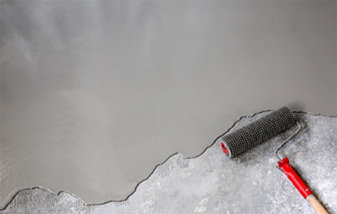
Aug . 09, 2024 19:10 Back to list
Understanding the Properties and Applications of Redispersible Polymer Powder in Construction Materials
Redispersible Polymer Powder An Overview
Redispersible polymer powders (RDPs) are increasingly becoming essential components in various construction and building materials. These powdered polymers are designed to improve the performance characteristics of mortars, adhesives, and other construction composites. They offer enhanced adhesion, flexibility, and water resistance, which are critical for the durability and longevity of construction materials.
RDPs are typically derived from aqueous polymer emulsions that are transformed into dry powders through a spray-drying process. Upon contact with water, these powders can easily redispersed, restoring their original properties. This versatility makes them an ideal choice for manufacturers aiming to develop high-performance products that can cater to a wide range of applications.
Redispersible Polymer Powder An Overview
Moreover, RDPs contribute to the flexibility of the final product. This flexibility is crucial, particularly in environments that experience thermal expansions and contractions. RDPs help to accommodate these movements, reducing the risk of cracking and failure in the finished installation. For example, in exterior applications, polymer-modified dry mortar products can withstand severe weather conditions, maintaining their performance and appearance over time.
redispersible polymer powder wikipedia

Water resistance is another key advantage provided by RDPs. Cementitious materials often face challenges related to moisture; if not properly managed, this can lead to issues like efflorescence and reduced durability. The incorporation of RDPs helps to create a hydrophobic layer that repels water, yet allows for vapor permeability, which is essential for the longevity of the materials used.
The environmental impact of construction materials is becoming increasingly important, and RDPs offer a sustainable option for manufacturers. By enhancing the performance of cement-based products, less material is needed to achieve the same level of performance, which can lead to less waste and a reduced carbon footprint. Additionally, many RDPs are made from renewable resources, aligning with global trends towards sustainability in the construction industry.
The application of redispersible polymer powders is broad and includes tile adhesives, thin-bed mortars, façade systems, internal plasters, and high-performance repair mortars. As the construction industry continues to evolve, the demand for high-quality, durable materials is ever-increasing. RDPs play a crucial role in meeting these demands, providing manufacturers with the ability to enhance their products while offering end-users solutions that are not only effective but also sustainable.
In summary, redispersible polymer powders represent a significant advancement in construction technology. Their ability to improve adhesion, flexibility, and water resistance makes them vital for modern building materials. As sustainability becomes more critical in the construction field, RDPs present an opportunity to enhance material performance while minimizing environmental impact. With ongoing research and development, the future of redispersible polymer powders looks promising, paving the way for innovative solutions in the construction industry.
-
Unlocking the Benefits of HPMC Products: A Gateway to Versatile Applications
NewsAug.07,2025
-
Unleashing the Potential of HPMC Ashland: A Comprehensive Look
NewsAug.07,2025
-
Tile Bonding Cellulose: The Key to Superior Adhesion and Durability
NewsAug.07,2025
-
Hydroxypropyl Methylcellulose Powder: The Versatile Component in Modern Pharmaceuticals
NewsAug.07,2025
-
Hydroxyethyl Cellulose: The Versatile Solution for Various Industries
NewsAug.07,2025
-
Hydroxyethyl Cellulose (HEC): The Versatile Polymer for Various Applications
NewsAug.07,2025







